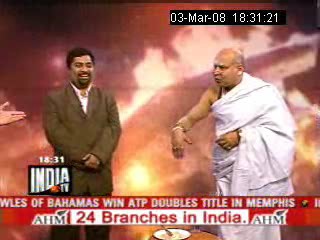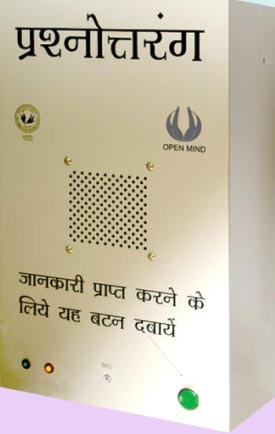Found this on boing-boing today. I wish I had seen this live. Would have been great to watch:
India TV, one of India’s major Hindi channels with national outreach, invited Sanal Edamaruku for a discussion on “Tantrik power versus Science”. Pandit Surinder Sharma, who claims to be the tantrik of top politicians and is well known from his TV shows, represented the other side. During the discussion, the tantrik showed a small human shape of wheat flour dough, laid a thread around it like a noose and tightened it. He claimed that he was able to kill any person he wanted within three minutes by using black magic. Sanal challenged him to try and kill him.
The tantrik tried. He chanted his mantras (magic words): “Om lingalingalinalinga, kilikili….” But his efforts did not show any impact on Sanal – not after three minutes, and not after five. The time was extended and extended again. The original discussion program should have ended here, but the “breaking news” of the ongoing great tantra challenge was overrunning all program schedules.
Now the tantrik changed his technique. He started sprinkling water on Sanal and brandishing a knife in front of him. Sometimes he moved the blade all over his body. Sanal did not flinch. Then he touched Sanal’s head with his hand, rubbing and rumpling up his hair, pressing his forehead, laying his hand over his eyes, pressing his fingers against his temples. When he pressed harder and harder, Sanal reminded him that he was supposed to use black magic only, not forceful attacks to bring him down. The tantrik took a new run: water, knife, fingers, mantras. But Sanal kept looking very healthy and even amused.
After nearly two hours, the anchor declared the tantrik’s failure. The tantrik, unwilling to admit defeat, tried the excuse that a very strong god whom Sanal might be worshipping obviously protected him. “No, I am an atheist,” said Sanal Edamaruku. Finally, the disgraced tantrik tried to save his face by claiming that there was a never-failing special black magic for ultimate destruction, which could, however, only been done at night. Bad luck again, he did not get away with this, but was challenged to prove his claim this very night in another “breaking news” live program.
See full article

